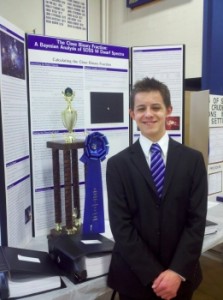By Alex Geli –
2 a.m: Columbia Bowl closes down for the night. Pins, balls, shoes, roof all in tact.
5 a.m: Lights appear to be back on. Rather bright, aren’t they?
6 a.m: Pins, balls, shoes, roof no longer in tact.
With a red, yellow and orange tint reflecting in their eyes, multiple witnesses made phone calls to 9-1-1 about the devastating fire that occurred Sunday morning at a Lancaster County bowling alley.
When fire crews arrived, nothing was left to be salvaged. The alley, which illuminated the night sky, was quoted as a “fireball.”
“That was a big chunk of my childhood,” he said. “I bowled there every Saturday morning,” said Alex Mercer, a senior and former employee alongside his mother at Columbia Bowl.
His former place of work was described by West Township fire Chief Barry Carter to be “a complete loss.”
The decision to fix the damages is still up in the air, leaving the people of Columbia with only hopes to see their local hot spot in the future.
An “unknown source,” as Mercer put it, told him that depending how much the insurance company gives the alley, they’re planning to rebuild.
Hinting at who that “unknown source” was, Mercer added, “We were real close to the owners.”
“They’re just totally devastated,” owner Nathan Jameson said. “It’s been two days and just a constant stream of people through here that come up and hug you, shake your hand.”
This instance is all-too-familiar for the family-owned business.
In 1971, the building had its first run-in with fire, with fire being the victor, just like on Sunday.
40 years later, the flowing, scorching hot blue, red and yellow gas returned to bite Columbia Bowl and Pinchaser’s Lounge in the rear-end a second time, and Jameson is left with not only a roofless structure, but a question as to who or what exactly sparked this catastrophe.
According to Mercer, right as the firemen got there, they ruled out the chance that an arsonist started the blaze. Also, they figured out that the fire started out in the center and spread.
The probable cause of the fire is due to recent electrical work.
“New games, new lanes…” he said, noting the new additions to the archaic building.
“Same old monitors though,” Mercer said sarcastically.
Currently, Mercer describes himself as “happily unemployed.” Not only has he not worked there for around a year, following his mother’s footsteps, but they both left off on a bad note.
“(The management) would pin everyone else’s ‘stuff’ on everyone else instead of work(ing on it themselves),” he said.
After a combined seven years working for Columbia Bowl, they figured it was time for a change.
The change? Well…
“We kind of quit,” Mercer said.
A video from CBS 21 local news is below. Pictures can also be seen by joining ulocal on WGAL.com.
David Mohimani also contributed to this story.

















